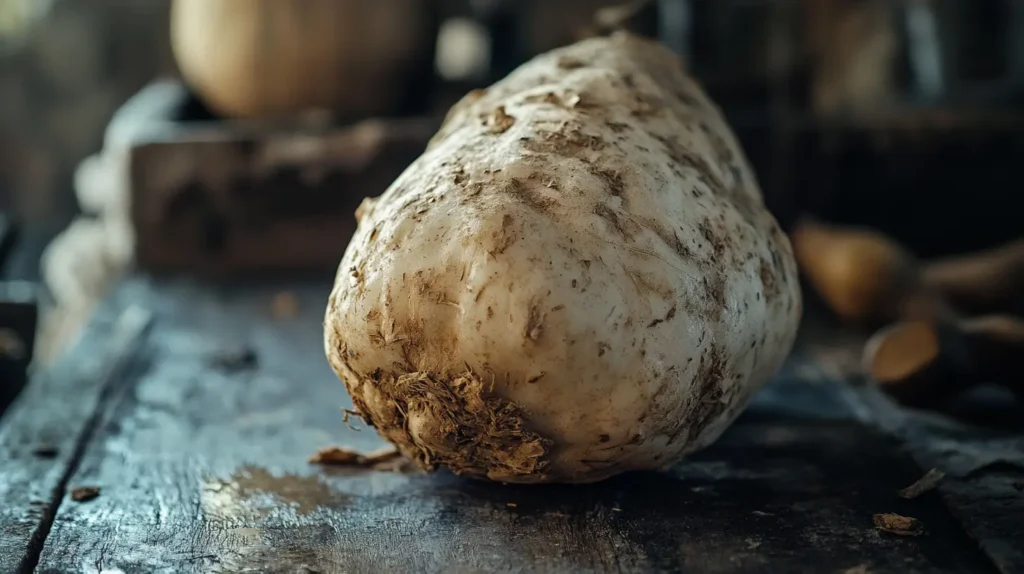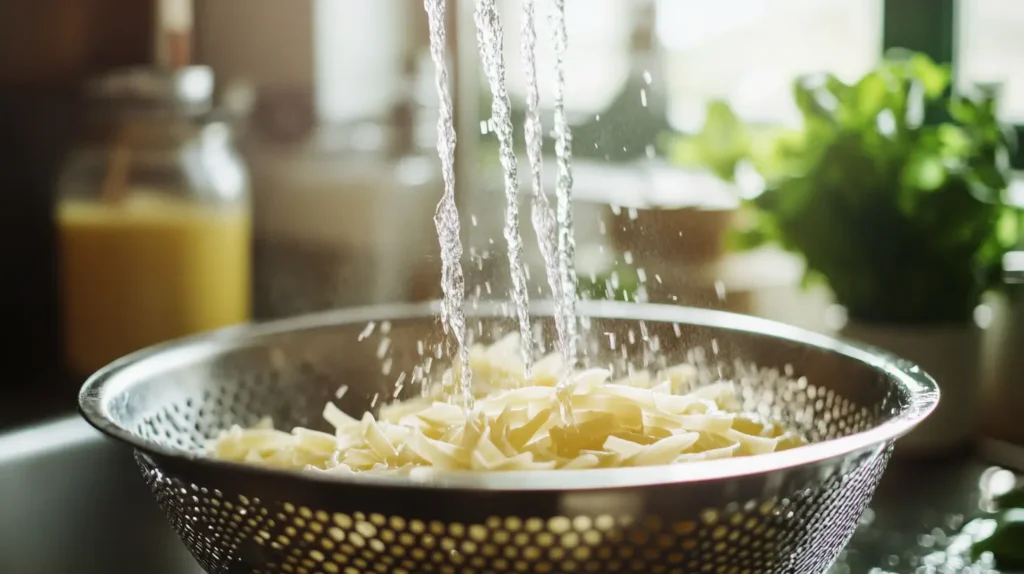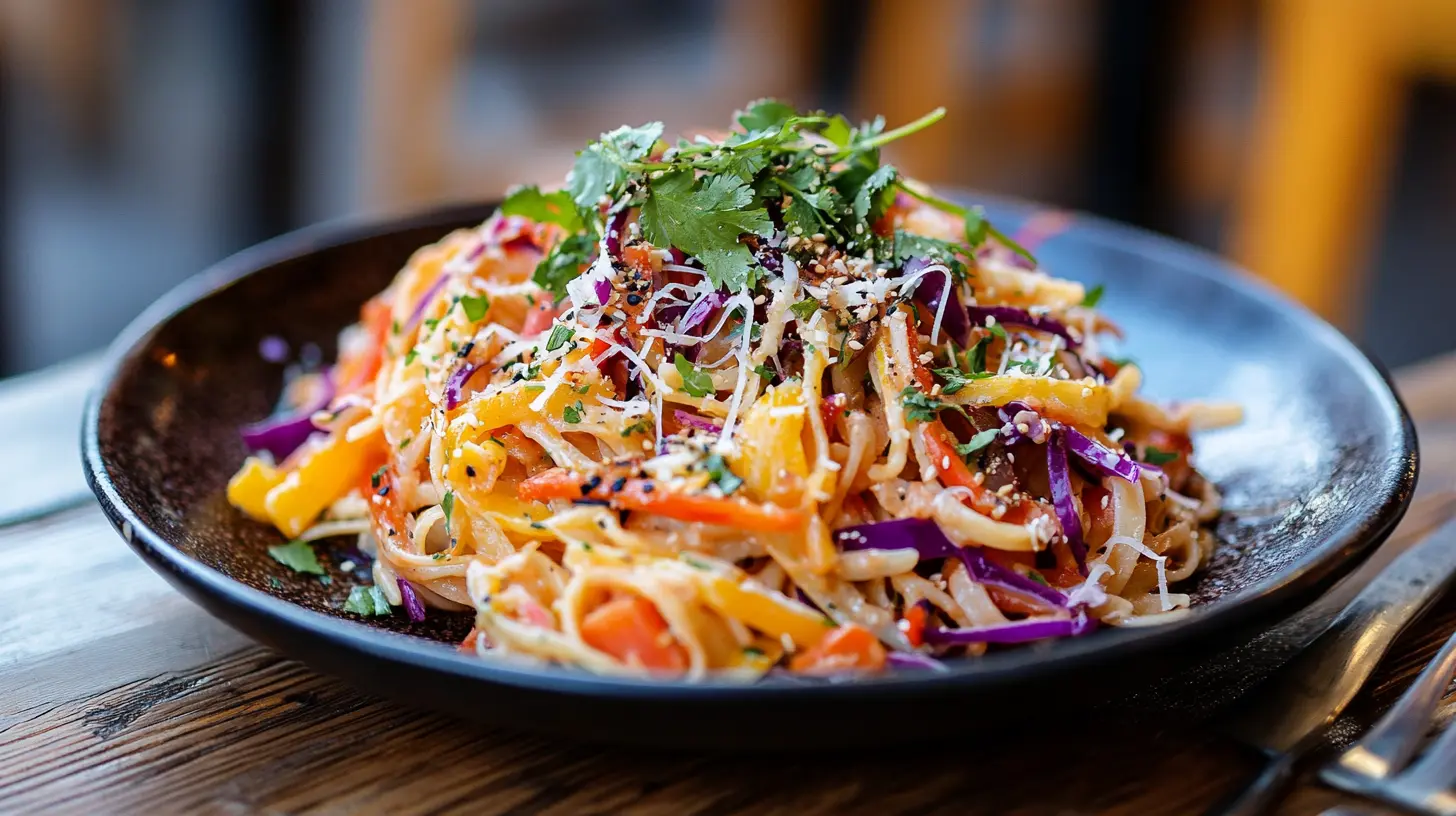A Healthier Choice for Your Plate
Introduction
Skinny Pasta has become a favorite among health enthusiasts, offering a lighter way to enjoy meals. But what exactly is it, and why is it so popular?
At its core, Skinny Pasta is made from konjac root, a plant known for its health benefits. Unlike regular noodles, it’s low in calories and carbs, making it a guilt-free option. With its neutral flavor, it absorbs sauces and seasonings beautifully, offering a tasty base for countless recipes.
This pasta alternative is perfect for those on diets like keto, gluten-free, or vegan. It’s packed with fiber and is almost fat-free, helping you enjoy satisfying meals while sticking to your health goals.
In this article, we’ll explore all there is to know about Skinny Pasta—its benefits, how to cook it, and why it’s perfect for many lifestyles. Let’s get started!
Table of contents
What Makes Skinny Pasta Unique?

Skinny Pasta isn’t just a new health trend; it’s a game-changer for those looking for Skinny Pasta stands out for several reasons. Its unique ingredients and health-focused design make it a popular choice for those looking to improve their diets without sacrificing taste or satisfaction.
Made from Konjac Root
The key ingredient in Skinny Pasta is konjac root, a plant rich in glucomannan, a natural fiber. This fiber absorbs water, helping you feel full and promoting healthy digestion. Konjac root is low in calories and carbs, making it an excellent base for this pasta substitute.
Unlike traditional pasta, which relies on wheat, semolina, or rice, this version skips grains altogether. It’s naturally gluten-free and suitable for people with specific dietary needs.
A Healthier Alternative
Here’s how Skinny Pasta compares to regular pasta:
| Feature | Traditional Pasta | Skinny Pasta |
|---|---|---|
| Calories | High (~200 per serving) | Low (~50 per serving) |
| Carbs | High | Almost none |
| Gluten-Free | Not always | Yes |
| Fiber Content | Low to moderate | High |
Thanks to its low-calorie and high-fiber nature, it’s a great choice for anyone trying to lose weight or manage their diet.
Versatile and Easy to Use
Skinny Pasta’s neutral flavor makes it a versatile addition to any meal. It works well with sauces, herbs, and seasonings, letting you create everything from Italian classics to Asian-inspired stir-fries.
Part 3: Health Benefits of Skinny Pasta
Why Skinny Pasta is Good for You
Skinny Pasta isn’t just a low-calorie option—it’s packed with health benefits that make it a valuable addition to your diet.
Weight Management
One of the biggest advantages of Skinny Pasta is its role in weight control. With less than 50 calories per serving, it’s perfect for those trying to cut down on calorie intake. The glucomannan fiber in konjac root absorbs water in your stomach, helping you feel full and reducing the urge to snack.
Pair it with lean proteins and vegetables to create a balanced meal that’s filling without being heavy.
Supports Healthy Digestion
The natural fiber in Skinny Pasta promotes better digestion in several ways:
- Prebiotic Benefits: Glucomannan feeds healthy gut bacteria, which supports overall gut health.
- Improves Regularity: It helps prevent constipation by keeping your digestive system active.
Adding Skinny Pasta to your meals is a simple way to increase fiber intake while enjoying delicious food.
Gluten-Free and Allergy-Friendly
For individuals with gluten sensitivities or celiac disease, finding suitable pasta alternatives can be difficult. Skinny Pasta is naturally gluten-free, making it a safe and tasty choice for those avoiding wheat.
It’s also free of common allergens, making it suitable for most diets, including keto, vegan, and diabetic-friendly plans.
Heart and Blood Sugar Benefits
Blood Sugar Control: By slowing sugar absorption into the bloodstream, it helps maintain steady glucose levels, which is especially helpful for diabetics.ne ingredient, it’s no surprise that this pasta replacement has become a favorite for health-conscious individuals..
Cholesterol Support: Glucomannan has been shown to help reduce bad cholesterol levels, promoting better heart health.
How to Cook Skinny Pasta

PreCooking Skinny Pasta the Right Way
Skinny Pasta is quick and easy to prepare, but it’s a little different from regular pasta. With a few simple steps, you can enjoy its unique texture and flavor in a variety of dishes.
Step-by-Step Guide
- Drain and Rinse:
Skinny Pasta is often packed in liquid to keep it fresh, which can have a slight odor due to the konjac root. Rinse it under cold water for 1–2 minutes to remove the smell completely. - Heat It Up:
Unlike regular pasta, Skinny Pasta is pre-cooked. After rinsing, heat it in a pan over medium heat for 2–3 minutes to warm it up. There’s no need to boil it! - Dry Thoroughly:
Once heated, pat the pasta dry with a paper towel. This step helps it absorb sauces better and enhances the overall texture. - Add Bold Flavors:
Since Skinny Pasta has a mild taste, it pairs best with rich sauces, fresh herbs, and spices. Experiment with your favorite flavors to create a dish you’ll love.
Common Mistakes to Avoid
Underseasoning: The pasta itself is neutral in taste, so don’t skimp on seasonings or sauces.
Skipping the Rinse: Always rinse the pasta to remove any odor from the packaging.
Overcooking: Heating it for too long can make the texture rubbery. Stick to 2–3 minutes.
Skinny Pasta and Special Diets
One of the reasons this pasta alternative has gained so much popularity is its ability to fit seamlessly into a variety of dietary plans. Whether you’re embracing a ketogenic lifestyle, focusing on sustainable eating, or preparing plant-based meals, this versatile ingredient can easily become a staple in your kitchen.
Keto, Paleo, and Vegan Compatibility
Keto Diet: For those following a ketogenic plan, this low-carb option is an absolute game-changer. With a carb count often under 1 gram per serving, it provides the satisfying texture of noodles without compromising ketosis. Pair it with rich, high-fat sauces like creamy avocado pesto, garlic butter, or Alfredo made with heavy cream for a perfectly keto-friendly meal.
Paleo Diet: This pasta substitute is perfectly aligned with paleo principles, as it’s free from grains, gluten, and artificial additives. It’s an excellent base for meals featuring grass-fed meats, fresh vegetables, and natural oils like olive or coconut oil. Add it to a stir-fry with lean proteins or use it as a bed for roasted veggies and a drizzle of tahini.
Vegan Diet:
Since it’s plant-based by nature, this product is a fantastic option for vegan and vegetarian diets. Its neutral flavor and light texture make it an excellent canvas for vegan creations like roasted vegetable stir-fries, tomato basil pasta, or coconut curry noodles loaded with fresh greens and spices.
Meal Prepping with Skinny Pasta
If you’re into meal prepping, Skinny Pasta is a convenient and versatile option that saves time and effort.
- Long Shelf Life: Skinny Pasta is typically pre-packaged and shelf-stable or refrigerated, meaning it stays fresh for weeks.
- Quick Preparation: With minimal cooking time, it’s perfect for busy individuals who want a quick yet healthy meal.
- Portion Control: The low-calorie nature of Skinny Pasta allows you to prepare generous portions without worrying about exceeding your calorie goals.
Consider dividing your meal prep into themes:
- Asian-inspired bowls: Add Skinny Pasta to sesame chicken or tofu bowls with bok choy and soy sauce.
- Mediterranean dishes: Pair it with olives, sun-dried tomatoes, and a drizzle of olive oil.
- Comfort classics: Try Skinny Pasta with turkey meatballs and marinara sauce.
Comparison with Other Low-Carb Alternatives
Skinny Pasta isn’t the only low-carb noodle on the market, but it stands out in several ways:
| Type of Pasta | Calories per Serving | Carb Content | Fiber Content | Texture |
|---|---|---|---|---|
| Skinny Pasta | ~10–50 calories | ~0–1g carbs | High | Springy and light |
| Zucchini Noodles (Zoodles) | ~20–30 calories | ~4g carbs | Moderate | Crunchy and fresh |
| Spaghetti Squash | ~40 calories | ~10g carbs | Low | Tender and stringy |
| Shirataki Noodles | ~10 calories | ~0g carbs | High | Similar to Skinny Pasta |
While zoodles and spaghetti squash are excellent whole-food options, Skinny Pasta shines for its ready-to-use convenience and neutral flavor, which works well with a variety of cuisines.
Skinny Pasta’s adaptability makes it a fantastic choice for individuals across all dietary preferences and goals.
Where to Buy and How to Choose
Skinny Pasta has gained popularity, making it widely available both in stores and online. Whether you’re new to this pasta alternative or a seasoned fan, knowing where to shop and how to choose the best product is key.
Popular Brands Offering Skinny Pasta
Several brands specialize in Skinny Pasta or similar low-calorie noodle options. Here are some trusted names to look for:
- Skinny Pasta (Official Brand):
Known for its wide range of konjac-based products, including spaghetti, fettuccine, and rice alternatives. - Miracle Noodle:
Offers shirataki noodles with options like angel hair, ziti, and even ready-to-eat meals. - Liviva Foods:
Features organic konjac pasta blended with oat fiber for a slightly softer texture. - Better Than Pasta:
This brand provides konjac pasta options that are pre-cooked and easy to prepare.
Each brand has its own take on Skinny Pasta, so exploring different options can help you find your favorite.
Reading Labels: What to Look For
When buying Skinny Pasta, keep these tips in mind:
- Ingredients:
Look for products with simple, clean ingredients like konjac root and water. Avoid brands with added sugars, artificial flavors, or preservatives. - Serving Size and Calories:
Check the nutritional information to ensure the product meets your dietary needs. Most Skinny Pasta options are under 50 calories per serving. - Texture Preferences:
Some brands blend konjac with other fibers, like oat or chickpea flour, which can affect the texture. If you prefer a softer or firmer noodle, read reviews or try different varieties. - Packaging:
Many Skinny Pasta products come pre-packaged in liquid. Make sure the packaging is sealed properly to ensure freshness.
Tips for Choosing the Right Type for Your Recipes
Skinny Pasta comes in various shapes and forms, allowing you to get creative with your recipes. Here’s a quick guide to choosing the best type for your dish:
- Spaghetti: Ideal for classic Italian dishes like marinara, carbonara, or pesto pasta.
- Fettuccine: Works wonderfully with creamy sauces or stir-fries.
- Angel Hair: A delicate option for light broths, soups, or cold salads.
- Rice Substitute: Perfect for dishes like fried rice, burrito bowls, or sushi rolls.
When in doubt, match the shape to the traditional pasta or grain it’s replacing. For example, use Skinny Pasta rice for risotto or spaghetti for Bolognese.
Buying Skinny Pasta Online vs. In-Store
- Online Shopping:
Websites like Amazon, Thrive Market, and brand-specific online stores offer a wide range of Skinny Pasta products. Online shopping is convenient and often provides access to bulk discounts. - In-Store Shopping:
Check local health food stores, specialty grocery stores, or even large retailers like Whole Foods and Walmart. Seeing the product in person allows you to check the texture and packaging before purchasing.
FAQs
What is Skinny Pasta made from?
Skinny Pasta is primarily made from konjac root, which contains glucomannan, a natural, water-soluble fiber. Some varieties may include additional ingredients like oat fiber or chickpea flour to modify texture or flavor.
Is Skinny Pasta safe for everyone?
Yes, Skinny Pasta is safe for most people. However, since it is high in fiber, those with sensitive stomachs or certain gastrointestinal conditions should start with small portions to ensure it’s well-tolerated. Always consult your doctor if you have specific dietary concerns.
Can I eat Skinny Pasta every day?
Absolutely! Skinny Pasta is a low-calorie, nutrient-rich food that can be enjoyed daily as part of a balanced diet. Just remember to pair it with healthy sauces, proteins, and vegetables for a complete meal.
How do I store Skinny Pasta?
Unopened packages can be stored at room temperature or in the refrigerator, depending on the brand. Once opened, store it in an airtight container in the refrigerator and consume within a few days.
Does Skinny Pasta taste like regular pasta?
Skinny Pasta has a neutral flavor, which allows it to take on the taste of sauces and seasonings. Its texture is slightly different—firmer and springier compared to traditional pasta—but it’s equally enjoyable once prepared properly.
Conclusion
For more inspiration, explore our recipe for Creamy Garlic Alfredo Pasta, a perfect pairing with skinny pasta. You can also check out Gluten-Free High Protein Meals for ideas to complement your pasta dishes. And if you’re in the mood for a sweet treat, try our guide on How to Make Gluten-Free Banana Nut Bread.
Your culinary journey just got healthier and tastier—happy cooking!

